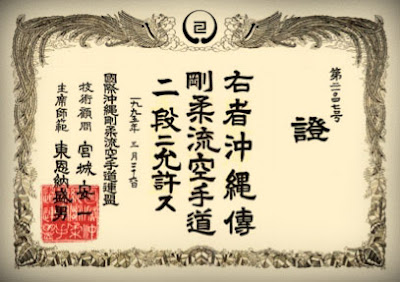 If you visit the Honbu dojo for some daytime training you may arrive to find the door closed and two rather large wooden clogs out the front…
If you visit the Honbu dojo for some daytime training you may arrive to find the door closed and two rather large wooden clogs out the front…While Sensei would never begrudge anyone entry, the clogs serve as a subtle ‘Do Not Disturb’ sign suggesting that you might be better returning later.
Sometimes this can be a tricky affair. Some days I caught myself making up to 5 or 6 trips and been left wondering if Sensei’s not wondering around somewhere barefoot.
A friend of mine once told me that he arrived one day and saw that the window was open a crack so he decided to stay and watch Sensei train - in hope he might observe some secret techniques…
Ok, so maybe I was a little misleading with the title, but there you have it. Might not have been the secret technique you were hoping for, but sometimes Sensei’s best secrets are the most obvious.




































